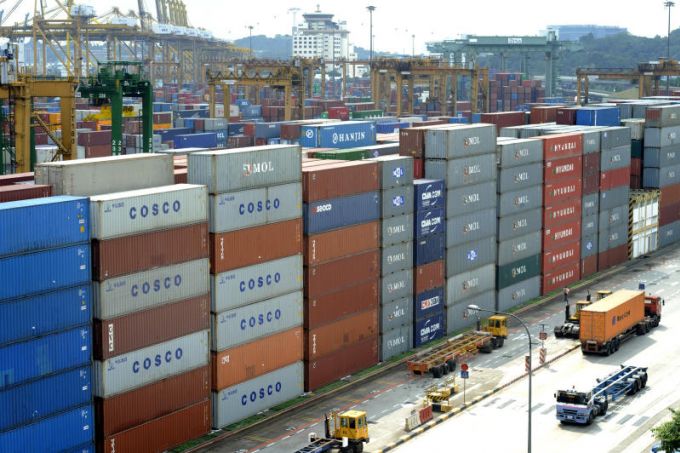Singapore exports fall for 2nd consecutive month in March
SINGAPORE’S exports continued to disappoint for the second straight month in March, hit by a triple whammy of high base effects, cooling electronics demand and a strengthening Singdollar.
This comes at a time when global trade tensions continue to mount, which could result in adverse repercussions for small, trade-dependent economies such as Singapore.
Even so, economists expect shipments to grow for the rest of 2018, albeit at a more muted pace compared to last year’s whopping double-digit increases. Official data released on Tuesday showed that non-oil domestic exports (NODX) fell by 2.7 per cent in March, coming in lower than already muted economist expectations of 1.2 per cent growth.
But this still fared better than February’s revised contraction of 6 per cent – its first decline after four months of growth.
On a month-on-month seasonally adjusted basis, NODX decreased by 1.8 per cent in March, narrowing from the previous month’s 2.7 per cent decline. Exports might have softened in March, but economists said that it was a culmination of several ongoing trends.
From a technical perspective, headline figures were weighed down due to last year’s high base and the translation effects from the Singdollar’s appreciation against the greenback.
The moderation of electronics shipments from last year’s breakneck pace is also in line with economists’ projections.
“The decline in NODX in March 2018 is not surprising as exceptionally strong demand for manufacturing output is difficult to sustain. The saving grace appears to be the more moderated decline in NODX compared to the previous month,” noted Dr Tan Khay Boon, senior lecturer, SIM Global Education.
Electronic NODX – a key economic driver over the past year – fell by 7.1 per cent in March, easing from the 12.7 per cent decrease in the previous month. The contraction was mostly attributed to parts of personal computers, integrated circuits and diodes and transistors.
Non-electronic NODX also fell last month, but by a milder 1.3 per cent compared to the 3.3 per cent decline in February. Non-monetary gold, structural parts made up of iron, steel & aluminium, and aircraft parts contributed the most to the slump.
Economists expressed caution about the outlook, but believed that exports would regain ground even as Singapore enters a mature phase of the economic recovery cycle. “Manufacturing growth will likely remain positive, but ease to the low single-digit by year-end,” said Maybank economists Chua Hak Bin and Lee Ju Ye.
UOB economist Francis Tan concurred that export growth is likely to slow, and maintained a forecast for NODX of 6.5 per cent, down from 8.8 per cent in 2017.
But not all economists are so upbeat. ING economist Rob Carnell flagged the downward trend of electronics as something to watch out for. “Having been one of the strongest elements of the Asian export story for 2017, this is a little worrying,” he noted.
Among the most pessimistic are Nomura economists Euben Paracuelles and Brian Tan, who viewed the Singapore economy as “susceptible to any escalation in trade protectionism or a tech cycle downturn”.
They said: “Overall, we continue to believe the weak NODX data reflects poor export competitiveness, which has been eroded by high labour costs… The broader economy will also likely remain stifled by structural headwinds, ranging from deteriorating demographics to rising structural unemployment.”
Looking ahead, economists cited the trade dispute between China and the US as a key downside risk to Singapore’s export performance.
Businesses also expressed concern on this front. Douglas Foo, president of Singapore Manufacturing Federation, acknowledged that the sabre-rattling by the world’s two largest superpowers has caused firms to become “jittery”.
But he is confident of the longer-term growth prospects, thanks to the rise of the middle-income in the region and their growing need for goods and services.
He noted: “Businesses should always be prepared for cycles, which tend to come and go. Growth doesn’t always come in a straight line. I think it (Singapore’s falling exports) will stabilise eventually.”
Source: http://www.businesstimes.com.sg/government-economy/singapore-exports-fall-for-2nd-consecutive-month-in-march


 Thailand
Thailand




